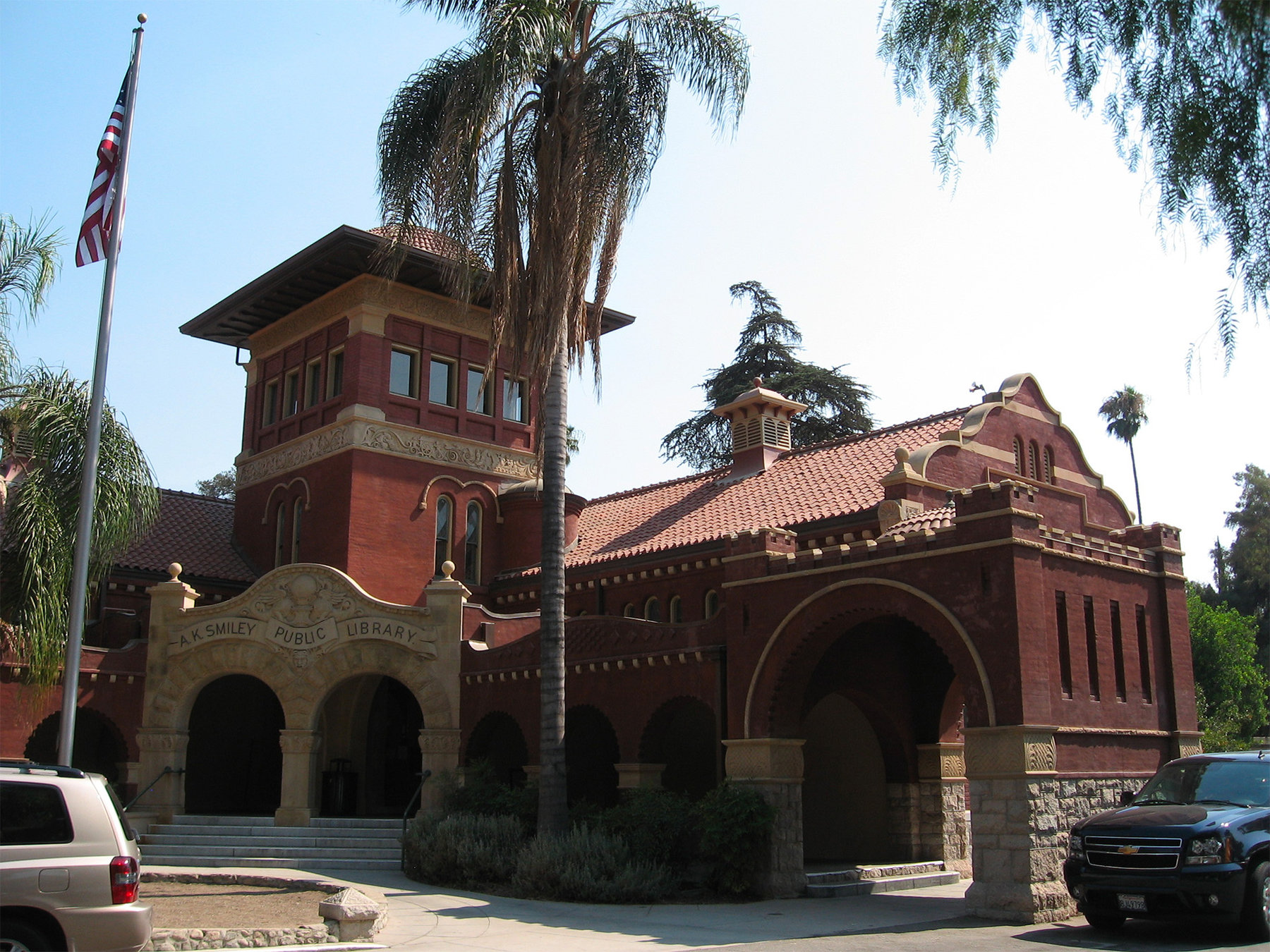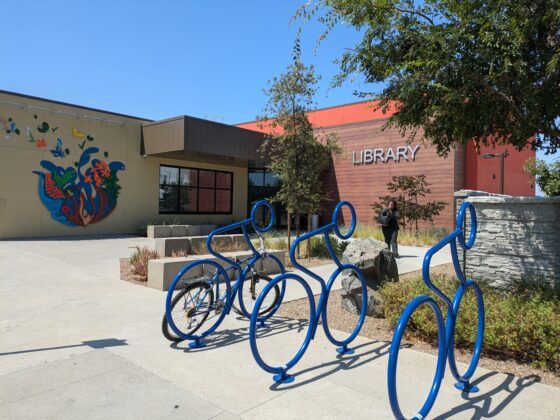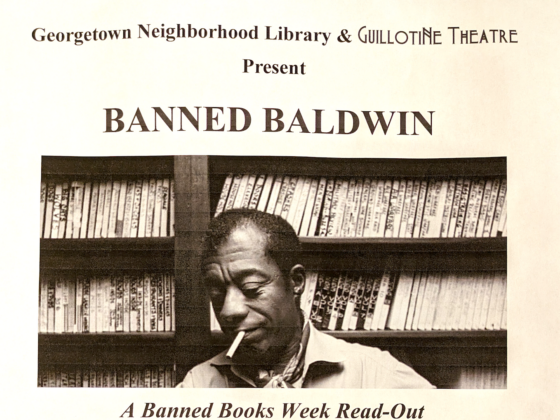The public library in Redlands, California is much more than a steward of books and information. It is an exemplar of the history of the town and a living legend of its spirit of generosity, a hallmark of Redlands since its first days.
Redlands, longtime a citrus town and at the edge of the sloping foothills of the San Bernardino Mountains, was founded in 1881 by Frank Brown, a Yale-educated civil engineer and Edward Judson, a former Wall Street broker, who donated more than 10,000 trees to help settle the town in its earliest days. One of the first things you notice today, if you take a break from the I-10 between L.A. and Palm Springs to exit at Redlands, are the tall, elegant Washingtoniapalms lining the broad streets of century-old Victorian, Colonials, and California Craftsman houses.
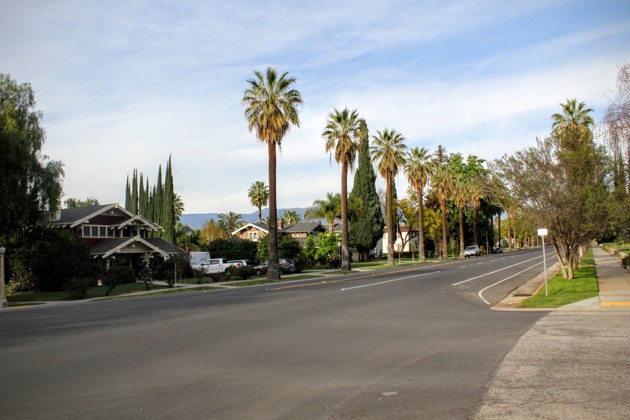
Even before the town was incorporated in 1888, its residents had built a YMCA. And they soon began angling for a public library. Alfred Smiley, a Quaker and founding partner with his brothers of the historic Mohonk Mountain House in New Paltz, New York, who spent his winters in Redlands was a prime promoter of the library. I felt I nearly knew the man from his words:
But what is this library for? For whom is it intended? Is it a working man’s club? No! It is for all the people of Redlands, rich and poor – old and young – to share alike in all of its advantages. And if there come in there a man in his shirt sleeves, who is a lover of books, and who cannot afford a coat to his back, he should be received with the same courtesy and attention as if he were dressed in purple and fine linen.
The Redlands Public Library, as it was called then, opened its doors as a reading room on the first floor of the town’s YMCA building in the spring of 1894. The town’s residents had voted to tax themselves to build the library, despite being in the midst of a national depression. We’ve seen similar examples along our American Futures tour of what Larry Burgess, former Redlands library director, calls “civic audacity” when citizens of Columbus, Ohio and Charleston, West Virginia have voted in tax measures to keep their libraries going strong even in times of economic challenge.
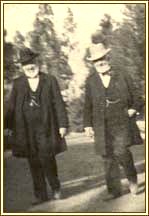
This was just the beginning. Alfred Smiley huddled with his twin brother, Albert, about taking the library to the next step – giving it a proper building and a beautiful setting. (This is a complete aside, but I can never see a photo of the Smiley twins without thinking of the Smith Brothers Cough Drops) Albert quietly borrowed money, bought up surrounding land, and commissioned a wonderful Moorish Revival building by architect T.R. Griffith, which was noticed across the state. The town renamed the library in honor of Albert, the A.K. Smiley Public Library (AKSPL). The library stands today as a national historic landmark.
This is the first time it has ever been my privilege to sign my name in the visitor’s book of a library which I had not founded, it gives me the greatest pleasure, the more so, as it is the gift of my dear and honored friend, Mr. Smiley. Before giving libraries I waited until I had this useless dross that men call money, because it is useless until it is put to some good use, and he could not wait. His love for the cause impelled him to give and he actually borrowed money – borrowed the money, I say, to build this magnificent structure.

The Redlands connection to Lincoln was forged by local philanthropists Robert and Alma Watchorn, in honor of their son, a young WWI war hero. Robert Watchorn, a British coalminer turned gas and oil magnate, loved Lincoln and began collecting memorabilia. He commissioned and built a lovely octagon building, which with later additions now houses an extensive collection of Lincolniana including sculptures, books and papers, paintings by the likes of Norman Rockwell, and on the slightly squeamish side, an original wreath from Lincoln’s casket and strands of Lincoln’s hair cut by the surgeon after the shooting.
And coming soon will be the newest addition to the jurisdiction of the library, the Redlands Historical Museum, which will be housed in the 1956 building of the town’s newspaper, the Redlands Daily Facts.
Back to the actual library itself. Director Don McCue told me about the realities that Smiley Library faces, striking themes I have heard about repeatedly as we’ve visited libraries around the country with the American Futures project:
The recession hit libraries hard, and every library I have visited, including in Redlands, is slowly repairing the damage. Restoring staff and library hours usually come first. In Redlands, the library could lean on its endowment, established by a far-sighted citizenry in the 1920s, to supplement support for salaries and services normally covered by the (thinning) city coffers. Library supporters, like the Friends of the Library and generous patrons, scrambled and fundraised to supplement or cover enhancements like programs and special events.
The transition to digital holdings is the way of the future, and libraries are finding their way. Books, the traditional and beloved currency of libraries, are expensive and can be quickly outdated. Digital subscriptions are accessible and instant, but a costly and constantly renewing expense.
Programming to suit the needs of the town is shifting terrain.
Smiley Library is abuzz with programs and events to serve the citizens of the town, whose numbers are growing and demographics are changing. Here are some of the programs that I found especially interesting, as they speak to the town of Redlands itself or are an example of the trends libraries are taking:
The Chinese and Hindi story hours to serve a changing population of Redlands, which is home to Esri, the geographic information system software company with an international employee base. (For the record: Esri is a partner of American Futures.)
A tour program on the history of Redlands for every 4th grader in Redlands schools.
A mobile app for library members to search the library catalog, browse the related social media, and manage their accounts.
An Employment Boot Camp for people starting, changing, returning to, or looking for a new job.
A newly-expanded book store and newly designed coffee bar.
A Geography Day, sponsored by the library, the University of Redlands, and Esri, featuring National Geographic’s Giant Traveling Map of Africa, a 26 X 35 foot map of Africa, with related events about the culture of Africa.

Perhaps the piece de resistance of the Smiley Library is the Heritage Room, begun 44 years ago by the then archivist and later library director Larry Burgess (Most of the library history recorded here came from conversations with Burgess and his writing). The current archivist Nathan Gonzales took me on a tour of the room and the basement vaults of Redlands history, much of will soon go to the new Redlands Historical Museum.
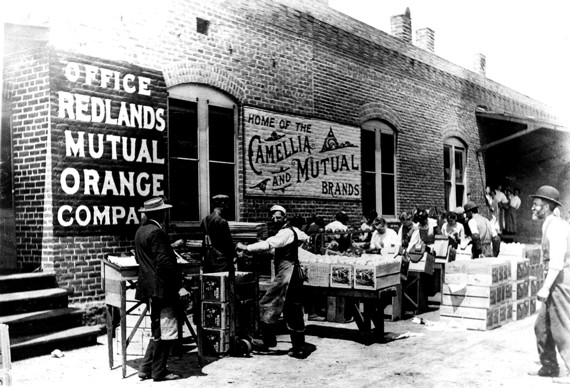
The holdings range from the historic to the humble: Andrew Carnegie’s collection of books on Indians of California and Southwest presented to Albert Smiley at his birthday celebration. All the issues of Sunset magazine. A comprehensive, publicly accessible collection of books on the history of Southern California. The first 1836 tiny schoolbook printed in California for early settlers, just 3×4 inches in size. Drawings from architect Leon Armantrout of many of the new and old buildings in town. Post-war color slides. Works of Dean Cornwell, a prominent illustrator and muralist from the early 20th century. Portraiture of Redlanders by local photographer Elmer Kingham from most of the 20th century. Some 2000 Southern California citrus labels. Maps of Redlands and California from the 1850s and newspapers from the 1880s. An oral history collection. And a lot of personal memorabilia and curiosities that the library generously receives.
Stop by your local library. Support your local library.

